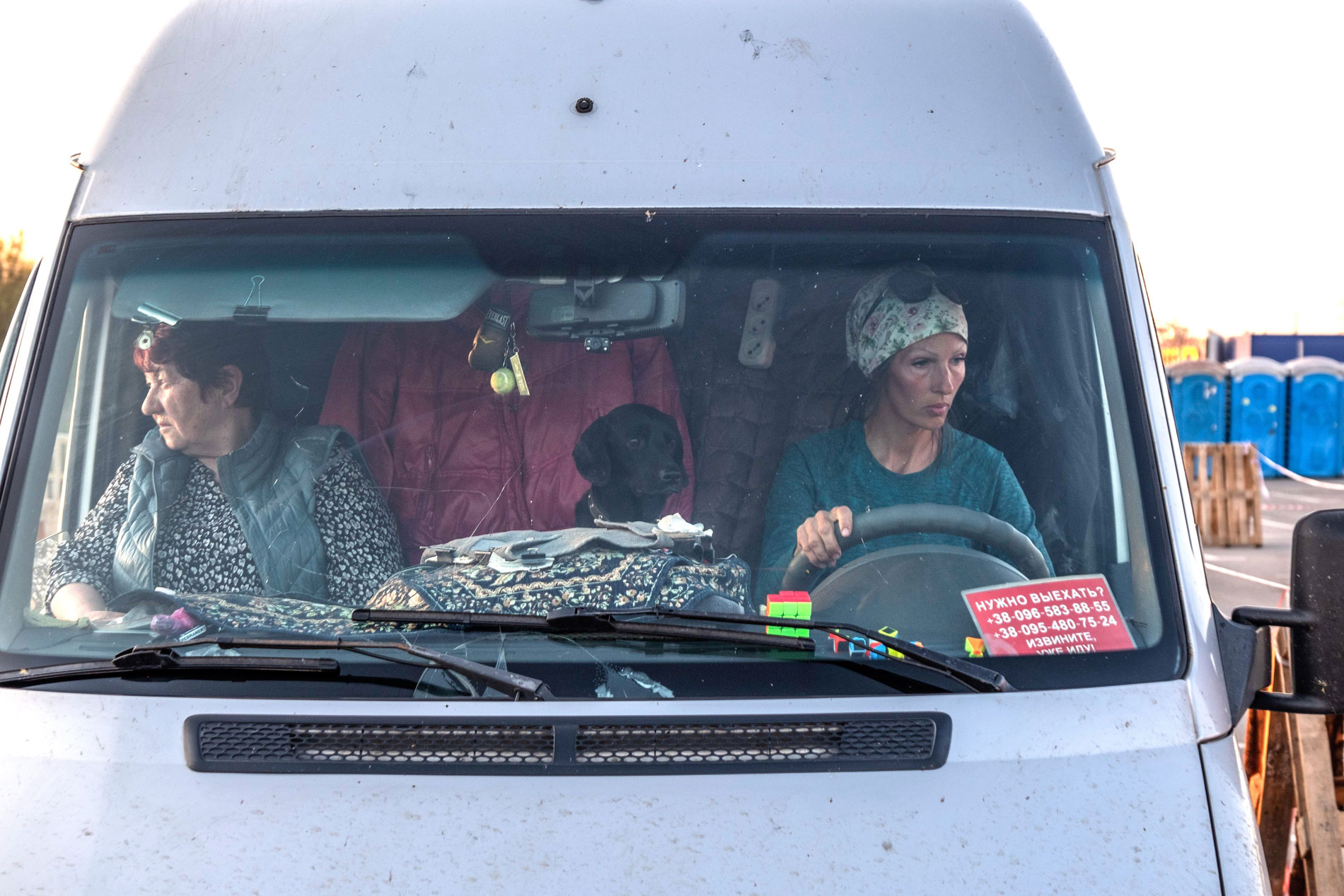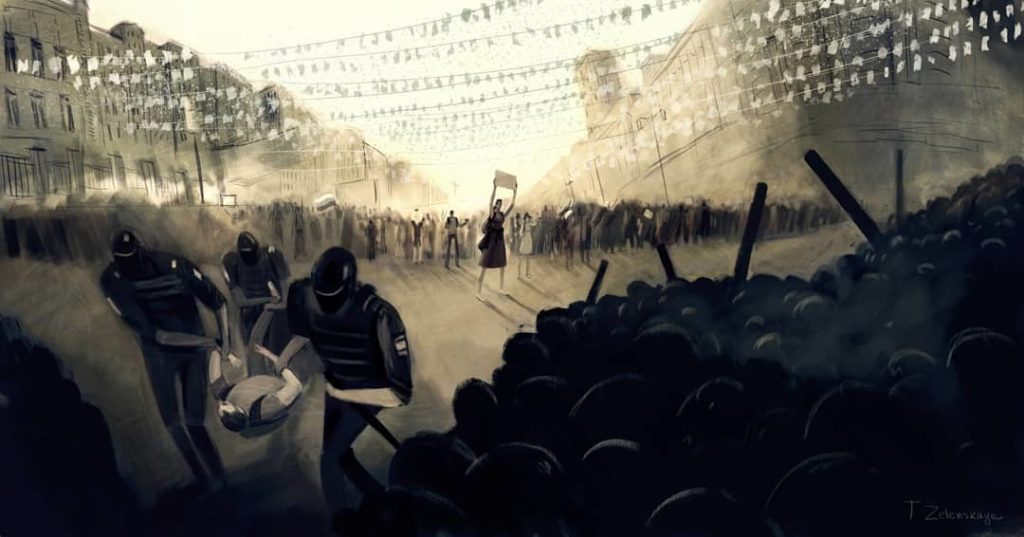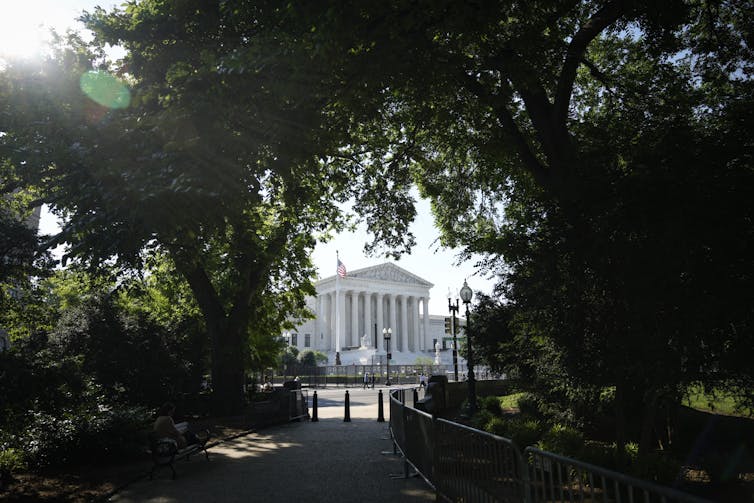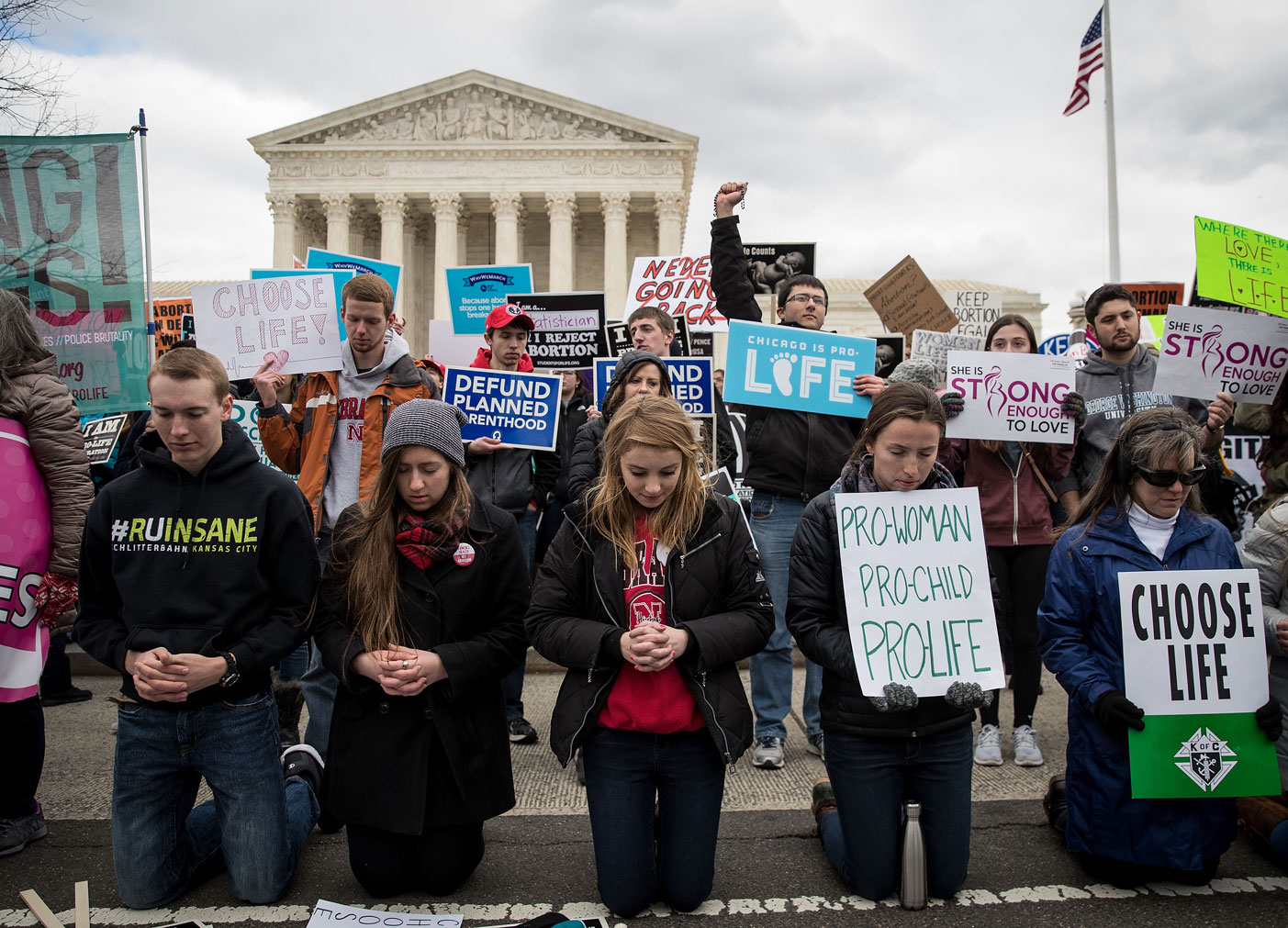Viktor Marunyak, the ‘sheriff’ of Stara Zburievka in southern Ukraine, survived abduction and torture at the hands of Russian occupiers. He tells New Lines why his native Kherson region will never be controlled by Russia

A woman from Kherson arrives at Zaporizhia Center for displaced people accompanied by a woman with dog who went to Kherson to rescue her /
Rick Mave / Sopa Images / LightRocket via Getty Images
Olga May 25, 2022
Olga May 25, 2022
May 25, 2022
Viktor Marunyak, a village head of Stara Zburievka in Ukraine’s southern Kherson region, has been known not only as one of the longest-serving mayors, but also as a movie star. His international visibility helped save his life after he was abducted by Russian soldiers during the invasion of Ukraine.
Marunyak was one of the protagonists of “Ukrainian Sheriffs,” a documentary directed by Roman Bondarchuk, winner of several international awards and Ukraine’s 2016 Oscars entry. The movie tells a story of a remote village in the Kherson region, 50 miles from Crimea, where two local men assume the functions of “sheriffs” because the police rarely come to the village to settle disputes. They are given this mandate by the village head, Viktor Marunyak, who trusts them to enforce law and order.
Marunyak, a historian by education, has been reelected as a mayor of Stara Zburievka four times since 2006, thanks to his efforts to reform the village and fight corruption. When the Russian full-scale invasion of Ukraine began on Feb. 24, Stara Zburievka immediately fell under occupation. For the first several weeks, things were quiet: Russians mostly bypassed it. In mid-March, the invaders came to Stara Zburievka knocking on people’s doors, looking for local collaborators willing to help install the Russian administration there.
On March 21, Marunyak’s 60th birthday, they knocked on his door too.
“Russians arrived at my house in the evening in several cars. They said they will take me with them, and then will bring me back home,” Marunyak told New Lines. “They took me to a building in the village where three local men have already been detained. They were young boys and they had signs of beating. Russians asked me to confirm that these boys were from our village. They started interrogating me about local ‘sabotage groups’ and weapons storages. For some reason, they were obsessed with the idea of finding a lot of Kalashnikovs. When I didn’t answer, they just beat me up.”
Marunyak wasn’t released the following morning, nor in the next three weeks. He was held by Russian occupiers first in Stara Zburievka and then in Kherson, where he was beaten and tortured for his refusal to collaborate.
“The first night, they didn’t let us lie down, we slept on our feet,” he said. “A Russian soldier prevented us from speaking to each other. They [the Russians] stripped us naked and made us freeze for two or three hours. They tried to suffocate us by putting their hands on our necks: and only released their grip when someone was about to pass out. They pressed pistols to our heads and threatened to shoot us.”
The torture continued in Kherson, where Marunyak was taken on the fourth day after his kidnapping. He was put in a basement of a pre-trial detention center, where Russians already held about 30 other people, some from his village. There, he and other arbitrarily detained Ukrainians were again interrogated, beaten up and tasered.
As a result of the beatings and torture by Russians, nine of Marunyak’s ribs were broken. “It was hard to sleep because of the pain. I was trying to do some exercises, to take deep breaths, but it was getting more difficult every day.”
“The hardest thing during torture was not to lose my mind. Your body and your brain react in very unexpected ways,” Marunyak recalls. “It was very hard when I was put in solitary confinement. I didn’t know which day of the week it was. What helped me was concentrating on thoughts about my family, that I had to survive to see them.”
While Marunyak was in captivity, Russians visited and searched his house several times. They took away everything, from their modest savings to food and socks. They also interrogated and pressured his wife, threatening to harm their children who live outside the Kherson region.
Similar things are happening across Stara Zburievka and elsewhere in the region, Marunyak said. Russians are going door-to-door, hunting and kidnapping Ukrainian officials, activists, journalists, veterans of war in Donbas and even people who rented their houses to Ukrainians soldiers of the 57th Infantry Brigade, which was stationed in the Stara Zburievka village before the Russian invasion.
“My story is not unique, these human rights abuses are happening on a large scale,” Marunyak said. But his story is unique in a sense that he was eventually released, unlike many other Ukrainians arbitrarily detained by Russians. According to the assessment of Natalia Bimbiraite, a human rights defender who fled Kherson after the Russian invasion and is currently helping to evacuate people from there, about 200 people, including local officials, journalists and teachers, have been abducted by Russians in the region so far. The whereabouts of many of them are still unknown.
Filmmakers who made “Ukrainian Sheriffs” and knew Marunyak personally sounded the alarm about his kidnapping at the international level. “We immediately wrote a letter to the head of Ukrainian Helsinki Human Rights Union, contacted Ukrainian and foreign journalists and filmmakers,” Darya Averchenko, the producer of the film, told New Lines. She reached out to international human rights organizations, such as Amnesty International, and her colleagues from the U.S. film industry wrote about the kidnapping of Marunyak in the media. Marunyak is sure this international outcry was fundamental to secure his release.
“After three weeks in detention, on April 12, a young Russian intelligence officer in a mask told me that he had no orders to keep me detained and that I was free. But on one condition: I had to return to the village, do my duties and inform them about anyone who organizes protests. It was clear for me that Russians wanted to keep me ‘on a short leash’. But I had no desire to work for them so I decided to flee.”
In early May, after being treated for pneumonia and broken ribs in a local hospital devoid of most medicines because of a Russian transport blockade, Marunyak was able to escape from the Kherson region. Filmmakers helped to raise the money and volunteers took him and his wife out via a safe route bypassing Russian checkpoints.
“It was a real special operation to take them out,” says human rights defender Natalia Bimbiraite who helped to secure Marunyak’s evacuation to a safe location in Ukraine. “Basically, we took the last available escape route from the Kherson region, because all other ways have been blocked by Russians.” After transiting through Odesa, Marunyak has now safely made it to Latvia, where he stays with the family of a filmmaker from the “Ukrainian Sheriffs” team.
“I want as many people as possible to know my story, and to know that we [Ukraine] have been invaded by fascists,” Marunyak said. Temporarily away from his village, he hopes to be back soon. “I am in touch with the people from the village and I plan to continue my work for its development. It’s all my life.”
Marunyak is worried about the fate of two of his “sheriffs” from Stara Zburievka. “One of them has joined the Ukrainian army and is currently fighting in the east. But there is no connection with another one; I know he was hiding [from Russians] in a village, in a forest, in a cemetery. I hope he managed to escape.”
What did his experience of life under occupation and in detention teach him? Marunyak reflects on his conversations with Russians who held him. “Russians and Ukrainians are from different planets. They are surprised that streets in our villages are lit, that there are WCs and showers in our houses. They are surprised that we have a decentralized system of governance, that mayors and village heads are elected, not appointed, that there is no top-down hierarchy when everyone follows orders from above.”
Marunyak says he thinks this bottom-up organization will ultimately be a decisive factor in Ukraine’s victory. Like he and his fellow “sheriffs” who took the initiative in their own hands to establish order in their village, many Ukrainians are voluntarily contributing to the resistance effort. In the city of Kherson and across the region, people are still taking to the streets protesting against Russian occupation, despite arrests and kidnappings. Those who do not go to protest sabotage the occupation authorities, preventing them from taking full control over the region.
“Russians were unable to organize a bogus referendum on the self-proclaimed Kherson Republic because the local population was totally opposed to it,” said Natalia Bimbiraite. “People took to the streets on April 27, when Russians planned to conduct it, and disrupted these plans. The ‘Crimea scenario’ is impossible in the Kherson region.”
Marunyak estimates that only 10 to 15% of the local population supports the occupation forces. Russian attempts to annex the Kherson region will not be legally recognized and the occupiers will struggle to govern here, he said.
“In fact, Russians use repression because they are afraid of us. Those sent to Kherson are scared to death of fighting with the Ukrainian armed forces so they take revenge on civilians,” he said. “I am sure Ukraine will be able to recapture the Kherson region. People are waiting for the Ukrainian army to come and liberate them. There is already an insurgency movement against the occupiers, even in my village.”
Viktor Marunyak, a village head of Stara Zburievka in Ukraine’s southern Kherson region, has been known not only as one of the longest-serving mayors, but also as a movie star. His international visibility helped save his life after he was abducted by Russian soldiers during the invasion of Ukraine.
Marunyak was one of the protagonists of “Ukrainian Sheriffs,” a documentary directed by Roman Bondarchuk, winner of several international awards and Ukraine’s 2016 Oscars entry. The movie tells a story of a remote village in the Kherson region, 50 miles from Crimea, where two local men assume the functions of “sheriffs” because the police rarely come to the village to settle disputes. They are given this mandate by the village head, Viktor Marunyak, who trusts them to enforce law and order.
Marunyak, a historian by education, has been reelected as a mayor of Stara Zburievka four times since 2006, thanks to his efforts to reform the village and fight corruption. When the Russian full-scale invasion of Ukraine began on Feb. 24, Stara Zburievka immediately fell under occupation. For the first several weeks, things were quiet: Russians mostly bypassed it. In mid-March, the invaders came to Stara Zburievka knocking on people’s doors, looking for local collaborators willing to help install the Russian administration there.
On March 21, Marunyak’s 60th birthday, they knocked on his door too.
“Russians arrived at my house in the evening in several cars. They said they will take me with them, and then will bring me back home,” Marunyak told New Lines. “They took me to a building in the village where three local men have already been detained. They were young boys and they had signs of beating. Russians asked me to confirm that these boys were from our village. They started interrogating me about local ‘sabotage groups’ and weapons storages. For some reason, they were obsessed with the idea of finding a lot of Kalashnikovs. When I didn’t answer, they just beat me up.”
Marunyak wasn’t released the following morning, nor in the next three weeks. He was held by Russian occupiers first in Stara Zburievka and then in Kherson, where he was beaten and tortured for his refusal to collaborate.
“The first night, they didn’t let us lie down, we slept on our feet,” he said. “A Russian soldier prevented us from speaking to each other. They [the Russians] stripped us naked and made us freeze for two or three hours. They tried to suffocate us by putting their hands on our necks: and only released their grip when someone was about to pass out. They pressed pistols to our heads and threatened to shoot us.”
The torture continued in Kherson, where Marunyak was taken on the fourth day after his kidnapping. He was put in a basement of a pre-trial detention center, where Russians already held about 30 other people, some from his village. There, he and other arbitrarily detained Ukrainians were again interrogated, beaten up and tasered.
As a result of the beatings and torture by Russians, nine of Marunyak’s ribs were broken. “It was hard to sleep because of the pain. I was trying to do some exercises, to take deep breaths, but it was getting more difficult every day.”
“The hardest thing during torture was not to lose my mind. Your body and your brain react in very unexpected ways,” Marunyak recalls. “It was very hard when I was put in solitary confinement. I didn’t know which day of the week it was. What helped me was concentrating on thoughts about my family, that I had to survive to see them.”
While Marunyak was in captivity, Russians visited and searched his house several times. They took away everything, from their modest savings to food and socks. They also interrogated and pressured his wife, threatening to harm their children who live outside the Kherson region.
Similar things are happening across Stara Zburievka and elsewhere in the region, Marunyak said. Russians are going door-to-door, hunting and kidnapping Ukrainian officials, activists, journalists, veterans of war in Donbas and even people who rented their houses to Ukrainians soldiers of the 57th Infantry Brigade, which was stationed in the Stara Zburievka village before the Russian invasion.
“My story is not unique, these human rights abuses are happening on a large scale,” Marunyak said. But his story is unique in a sense that he was eventually released, unlike many other Ukrainians arbitrarily detained by Russians. According to the assessment of Natalia Bimbiraite, a human rights defender who fled Kherson after the Russian invasion and is currently helping to evacuate people from there, about 200 people, including local officials, journalists and teachers, have been abducted by Russians in the region so far. The whereabouts of many of them are still unknown.
Filmmakers who made “Ukrainian Sheriffs” and knew Marunyak personally sounded the alarm about his kidnapping at the international level. “We immediately wrote a letter to the head of Ukrainian Helsinki Human Rights Union, contacted Ukrainian and foreign journalists and filmmakers,” Darya Averchenko, the producer of the film, told New Lines. She reached out to international human rights organizations, such as Amnesty International, and her colleagues from the U.S. film industry wrote about the kidnapping of Marunyak in the media. Marunyak is sure this international outcry was fundamental to secure his release.
“After three weeks in detention, on April 12, a young Russian intelligence officer in a mask told me that he had no orders to keep me detained and that I was free. But on one condition: I had to return to the village, do my duties and inform them about anyone who organizes protests. It was clear for me that Russians wanted to keep me ‘on a short leash’. But I had no desire to work for them so I decided to flee.”
In early May, after being treated for pneumonia and broken ribs in a local hospital devoid of most medicines because of a Russian transport blockade, Marunyak was able to escape from the Kherson region. Filmmakers helped to raise the money and volunteers took him and his wife out via a safe route bypassing Russian checkpoints.
“It was a real special operation to take them out,” says human rights defender Natalia Bimbiraite who helped to secure Marunyak’s evacuation to a safe location in Ukraine. “Basically, we took the last available escape route from the Kherson region, because all other ways have been blocked by Russians.” After transiting through Odesa, Marunyak has now safely made it to Latvia, where he stays with the family of a filmmaker from the “Ukrainian Sheriffs” team.
“I want as many people as possible to know my story, and to know that we [Ukraine] have been invaded by fascists,” Marunyak said. Temporarily away from his village, he hopes to be back soon. “I am in touch with the people from the village and I plan to continue my work for its development. It’s all my life.”
Marunyak is worried about the fate of two of his “sheriffs” from Stara Zburievka. “One of them has joined the Ukrainian army and is currently fighting in the east. But there is no connection with another one; I know he was hiding [from Russians] in a village, in a forest, in a cemetery. I hope he managed to escape.”
What did his experience of life under occupation and in detention teach him? Marunyak reflects on his conversations with Russians who held him. “Russians and Ukrainians are from different planets. They are surprised that streets in our villages are lit, that there are WCs and showers in our houses. They are surprised that we have a decentralized system of governance, that mayors and village heads are elected, not appointed, that there is no top-down hierarchy when everyone follows orders from above.”
Marunyak says he thinks this bottom-up organization will ultimately be a decisive factor in Ukraine’s victory. Like he and his fellow “sheriffs” who took the initiative in their own hands to establish order in their village, many Ukrainians are voluntarily contributing to the resistance effort. In the city of Kherson and across the region, people are still taking to the streets protesting against Russian occupation, despite arrests and kidnappings. Those who do not go to protest sabotage the occupation authorities, preventing them from taking full control over the region.
“Russians were unable to organize a bogus referendum on the self-proclaimed Kherson Republic because the local population was totally opposed to it,” said Natalia Bimbiraite. “People took to the streets on April 27, when Russians planned to conduct it, and disrupted these plans. The ‘Crimea scenario’ is impossible in the Kherson region.”
Marunyak estimates that only 10 to 15% of the local population supports the occupation forces. Russian attempts to annex the Kherson region will not be legally recognized and the occupiers will struggle to govern here, he said.
“In fact, Russians use repression because they are afraid of us. Those sent to Kherson are scared to death of fighting with the Ukrainian armed forces so they take revenge on civilians,” he said. “I am sure Ukraine will be able to recapture the Kherson region. People are waiting for the Ukrainian army to come and liberate them. There is already an insurgency movement against the occupiers, even in my village.”
Olga Tokariuk is an independent journalist based in Ukraine













.jpg)
